Words have power. They encourage, heal, comfort, criticize, hurt; it all depends whether you choose to use them for good or evil. They affect adults, children, and plants alike. This week on You Had Me At Gardening we explore how plants react when exposed to different types of rhetoric, more specifically how plant growth is affected. For that reason, we chose the famous speech I have a dream of Martin Luther King and a speech by Adolf Hitler. We conducted the plant experiment using bean seeds as they’re known to grow quickly.
What inspired us to try this out?
There are some interesting studies out there that explored the possibility of sound affecting plant growth and health, and carrying out our own experiment was definitely exciting!
Now although plants don’t have an organ to recognize air vibrations (like eardrums in humans), previous studies indicate that plants are highly sensitive to the sounds in their environment.
For instance, a South Korean study published in 2018 explained that plants show reactions to sound stimuli. For example, we have the sounds of buzzing insects. Depending on the type of sound they produce, plants identify the insects as either threats or friends. Certain frequencies of bee buzzing will make plants release pollen from their anthers, thus facilitating pollination.
On the other hand, sounds of insect chewing trigger the release of defense related chemicals.
The authors also found that sound treatment altered the level of growth hormones, and therefore, sound could be used to enhance plant growth, while also increasing plant resistance against external stress. The article gave examples of plant growth that was improved by sound treatment in crops such as rice, wheat, tomato, lettuce and spinach.
They also discovered that if the proper frequency and decibels are picked according to crop species, a sound wave treatment could help delay fruit ripening. This would make fruit last longer and seems a better alternative to genetic modification or chemical preservatives.
Another study from 2010 conducted in China focused on the Influence of Sound Wave Stimulation on the Growth of Strawberry in Sunlight Greenhouse. The authors found that the group exposed to sounds had a denser leaf area at the beginning of the growing season, squaring period and fruiting stage. Also, the strawberry that received the sound treatment was stronger and became more resistant to disease and pests.
We took all these findings into consideration when we decided to conduct our own experiment.
Another interesting experiment related to discourse and how words can influence plant health comes from IKEA. They conducted their own experiment last year, in a school in the Middle East, where they placed two plants.
The plants received the same treatment in terms of water, light and fertilizer. But for 30 days the first plant was exposed to words of encouragement and kind comments, while the second one received only criticism and harsh remarks. At the end, the states of the two were compared.
After 30 days there was a clear difference in the plants’ wellbeing. The one that received compliments was thriving, while the one that received criticism showed signs of struggling and had droopy brown leaves. The results spoke for themselves.
Why did IKEA conduct its experiment in a school? It was an attempt to raise awareness on the issue of bullying and the negative effects it has on children and people in general. School bullying statistics show that in the US alone, one out of four children is bullied. And the most pervasive type is verbal bullying, that affects 77% of all students, with 14% showing signs of low self-esteem, anxiety and depression.
The takeaway?
Words have power and they affect all living beings, be they humans or plants. It’s up to us to choose the right ones.
Our experiment
We also wanted to investigate how plants are affected by sounds and (negative) words.
But instead of speaking to our plants for the experiment, we went for audio recordings of 2 very famous people:
- Martin Luther King – “I have a Dream” speech.
- Adolf Hitler – a public speech from the 1930s at Festplatz, Tempelhof, Nr Berlin.
Before we go any further with details of the experiment, we first need to analyze and compare the 2 speeches.
King and Hitler both tried to persuade others and talked about racial segregation, but their political views were very different. They both spoke according to their own motives, talking about goals, desires, and stirring people to act in a direction or the other.
According to the motives of each, the person’s discourse is seen as either positive or negative. We can consider a discourse positive if the orator encourages peacemaking actions, while a negative discourse includes intentions to instigate anger, resentment, hostility or conflict.
King’s discourse focused on unity and bringing together the people of the world. He advocated for peace, not war. He called for justice, freedom and equality among people, all by using peaceful means. He wanted change for the people, but not through violence. He tried to establish common ground with his audience through emotional appeal to their needs and values.
On the other hand, Hitler’s discourse focused on the achievements made together with the people and him as a leader, trying to express the unity of the German people. In most of his speeches he encouraged racial segregation by advocating for the belief that only people with Aryan blood should live together. Due to perhaps his experience in the military, his words were more direct, and he didn’t use a lot of metaphors when conveying his ideas.
Experiment materials and design
As mentioned before, we chose bean seeds for our experiments as they grow quickly. We used a total of 30 seeds, and we selected 3 groups for the experiment:
- One group was exposed to King’s speech
- One to Hitler’s
- The last one was the control group that was not exposed to any sounds.
Each group was given a total of ten seeds and in terms of light, water and soil, all seeds were given the same treatment.
Duration of experiment: 15 days
Period: 19 August – 3 September
Exposure to discourse: Daily from Monday to Friday, 3 full hours starting from 4:30 PM
Day #0
Each group was given 2 pots, and each pot had an equal number of 5 seeds.
We diligently planted the seeds and exposed the treatment groups to their respective discourses for 3 hours from 4:30 PM.
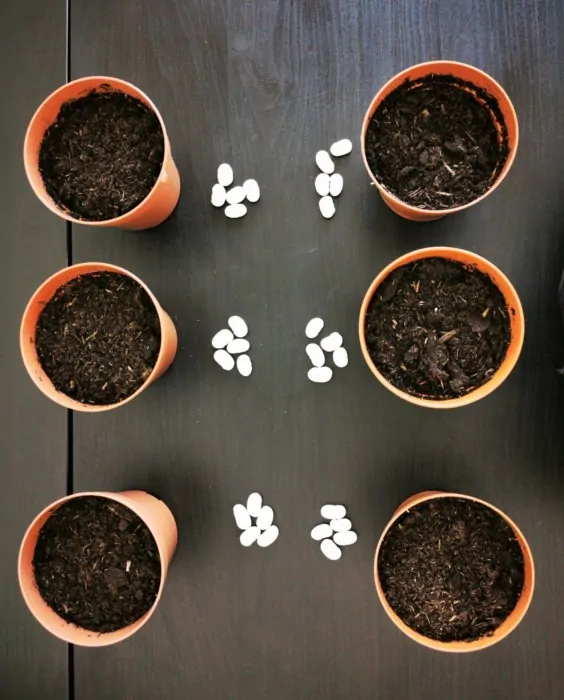
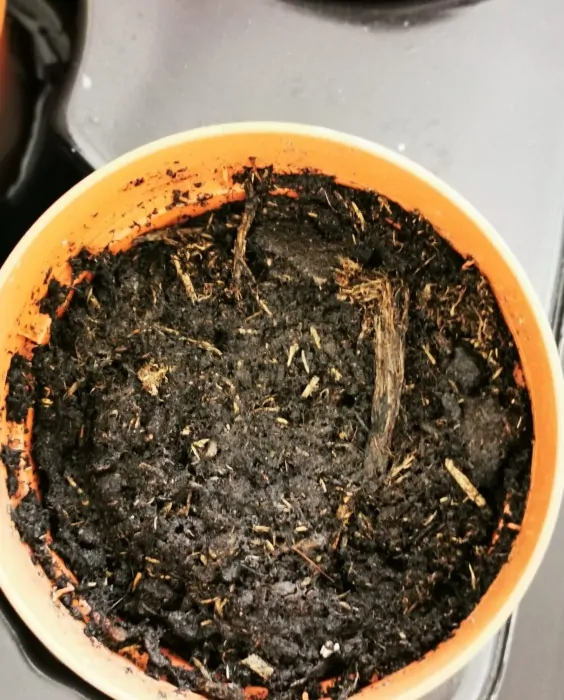
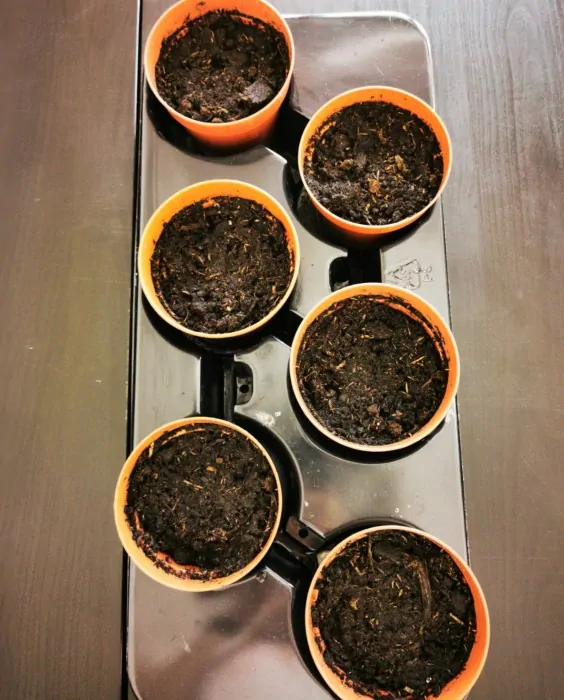
Day #1
No notable activity recorded yet in either group.
Continued to expose the two groups to their respective discourses.
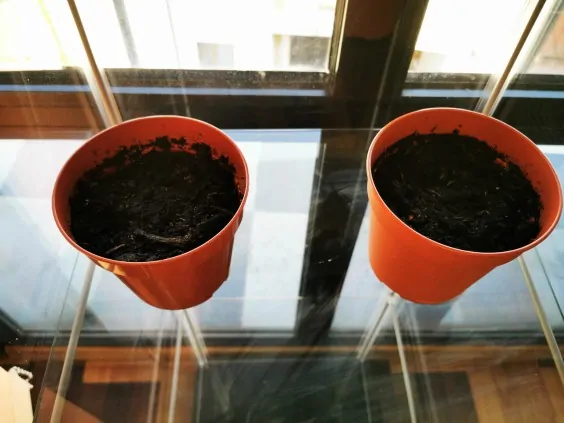
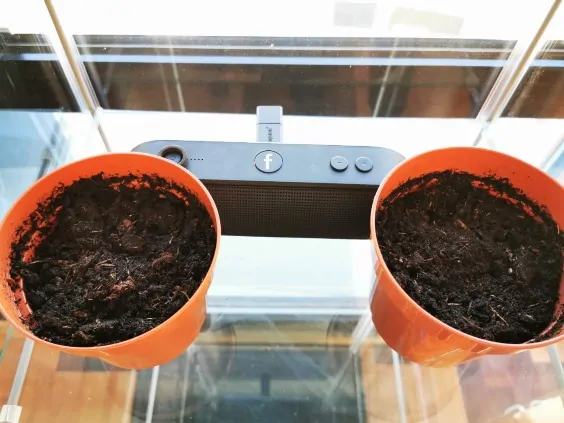
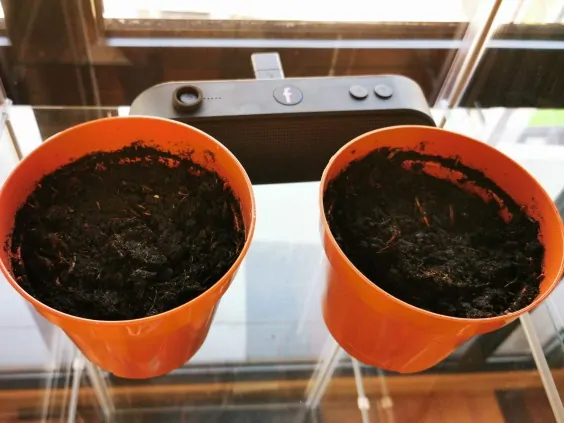
Day #3
We finally had sprouts!
So far, the control group was leading with 8 emerging sprouts, some slightly more visible than others. Following, we had 7 sprouts for the Hitler group, and 6 for the King group.
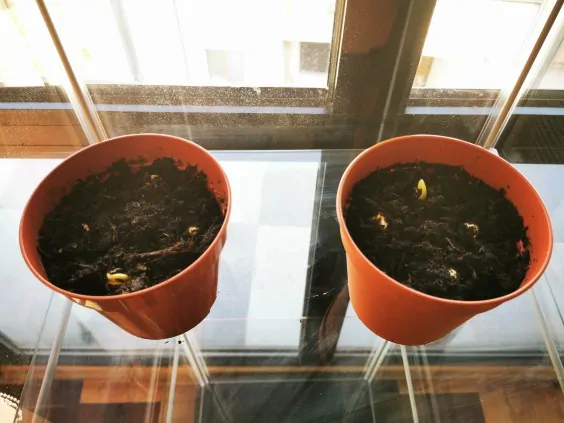
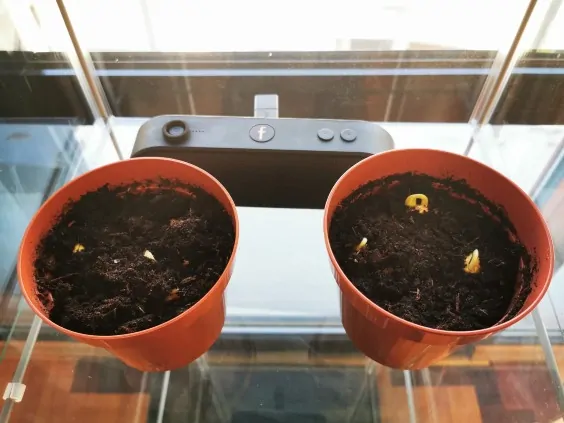
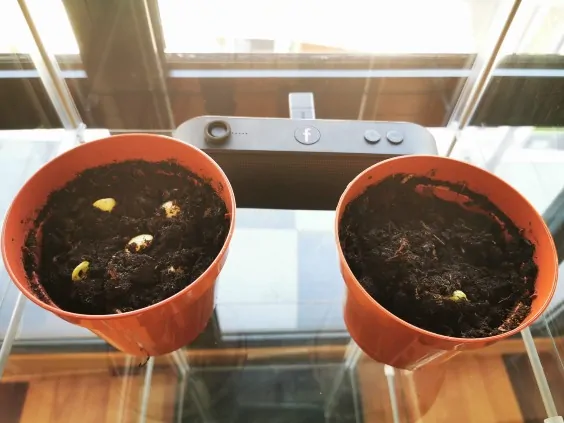
Day #4
The control group had 8 stems growing steadily, the Hitler group had 7 plus one sprout slightly visible in the ground, and the King group had 7 tall stems plus 2 new sprouts emerging.
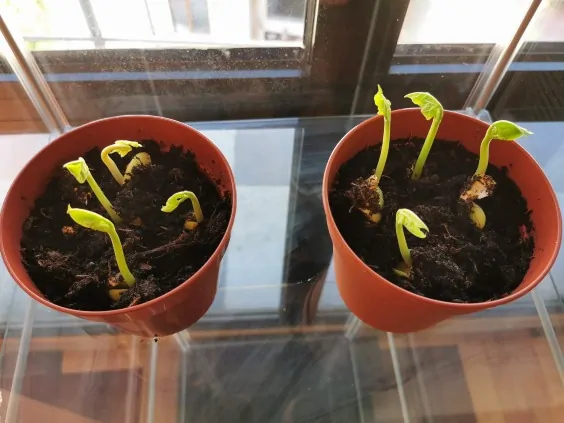
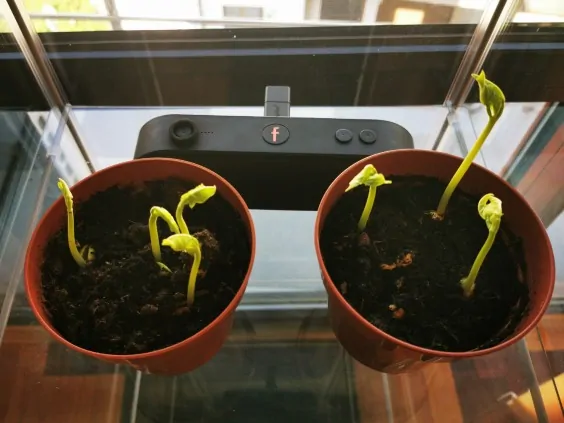
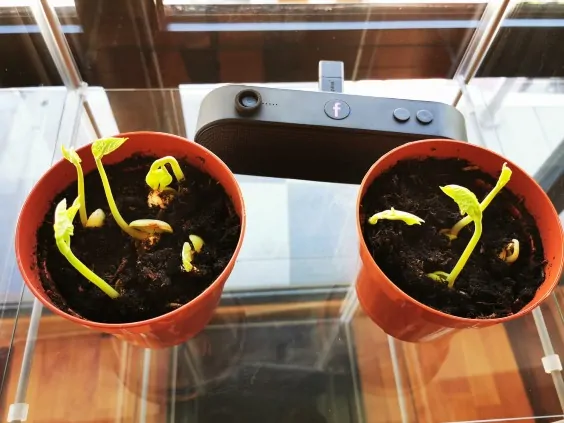
Day #7
The control group had 9 stems of different heights. They all seemed sturdy and stood straight, with decent leaf density.
The Hitler group had 8 stems of relative similar heights and a new smaller growing sprout. Height was good, but 3 stems were tilting in different directions. Lack of good leaf density made them look a bit bare.
The King group had 10 stems of different heights. All of them looked sturdy and straight with good leaf density.
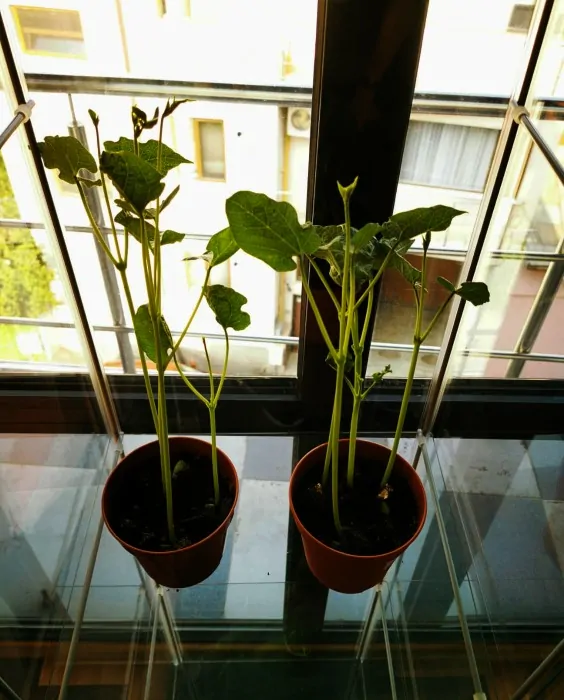
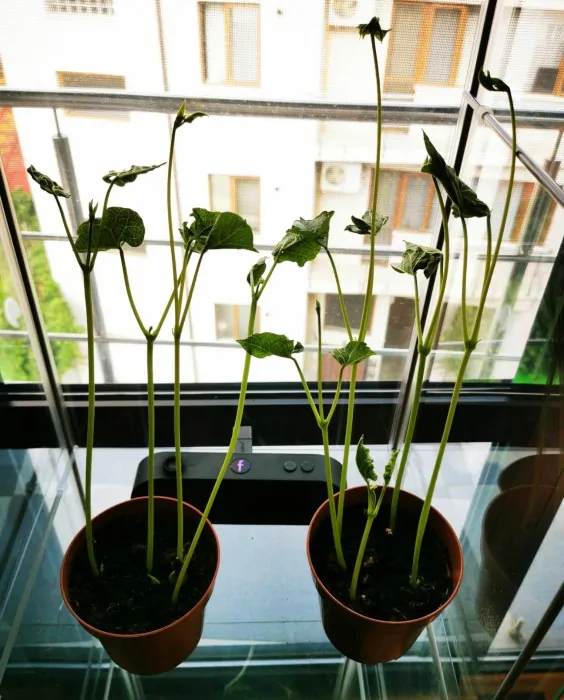
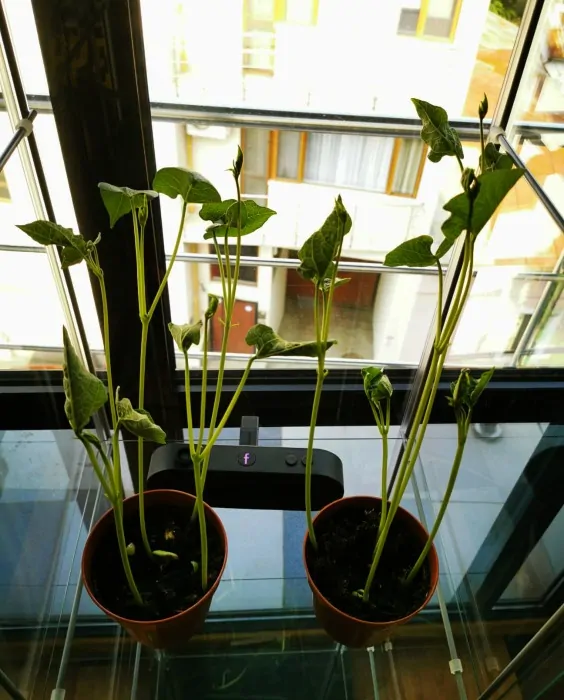
Day #15
All the seeds in the group exposed to King’s discourse sprouted, while in the control group and the one exposed to Hitler’s discourse, nine out of ten seeds sprouted.
When it comes to height, we can clearly see that the group exposed to Hitler’s speech is shorter compared to the control group and the group exposed to King’s speech.
However, between the control group and the one exposed to King there is little to no difference.
All the groups exhibited good leaf density. The control group and the King group had more bent stems than the Hitler group, but then again, that might have been due to their height.
Plant experiment #2 - Hitler vs Martin Luther King
Pot #1 | Pot #2 |
|||
|---|---|---|---|---|
Length | No. of seeds sprouted | Length | No. of seeds sprouted |
|
| HITLER GROUP | 65 cm | 5 out of 5 | 60 cm | 4 out of 5 |
| CONTROL GROUP | 83 cm | 4 out of 5 | 74 cm | 5 out of 5 |
| KING GROUP | 85 cm | 5 out of 5 | 70 cm | 5 out of 5 |
Conclusion
In brief, we did find evidence that negative discourse intended to instigate resentment and hostility affects plant growth rate.
The effect on sprouting, however, is questionable. There were also no major differences in height between the control group and the one that was exposed to a positive discourse.
The study results were not as shocking as those in the Ikea experiment, but the difference in plant height might suggest that negativity expressed in words may directly influence plant growth rates.
What do you think? If you have conducted any such experiments yourself, we would love to hear about the outcome.
Sources:
- Eliasson, Emma. “THE POWER OF WORDS: An Analysis Based on Two Speeches, by Two Famous Orators.” Halmstad University, 2013.
- Jung, Jihye, Seon-Kyu Kim, Joo Y. Kim, Mi-Jeong Jeong and Choong-Min Ryu. “Beyond Chemical Triggers: Evidence for Sound-Evoked Physiological Reactions in Plants.” Frontiers in Plant Science 9, no. 25 (2018): doi: 10.3389/fpls.2018.00025
- Qi, Lirong, Guanghui Teng, Tianzhen Hou, Baoying Zhu, and Xiaona Liu. “Influence of Sound Wave Stimulation on the Growth of Strawberry in Sunlight Greenhouse.” International Federation for Information Processing 317 (2010): 449-454.
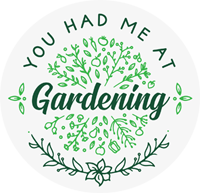
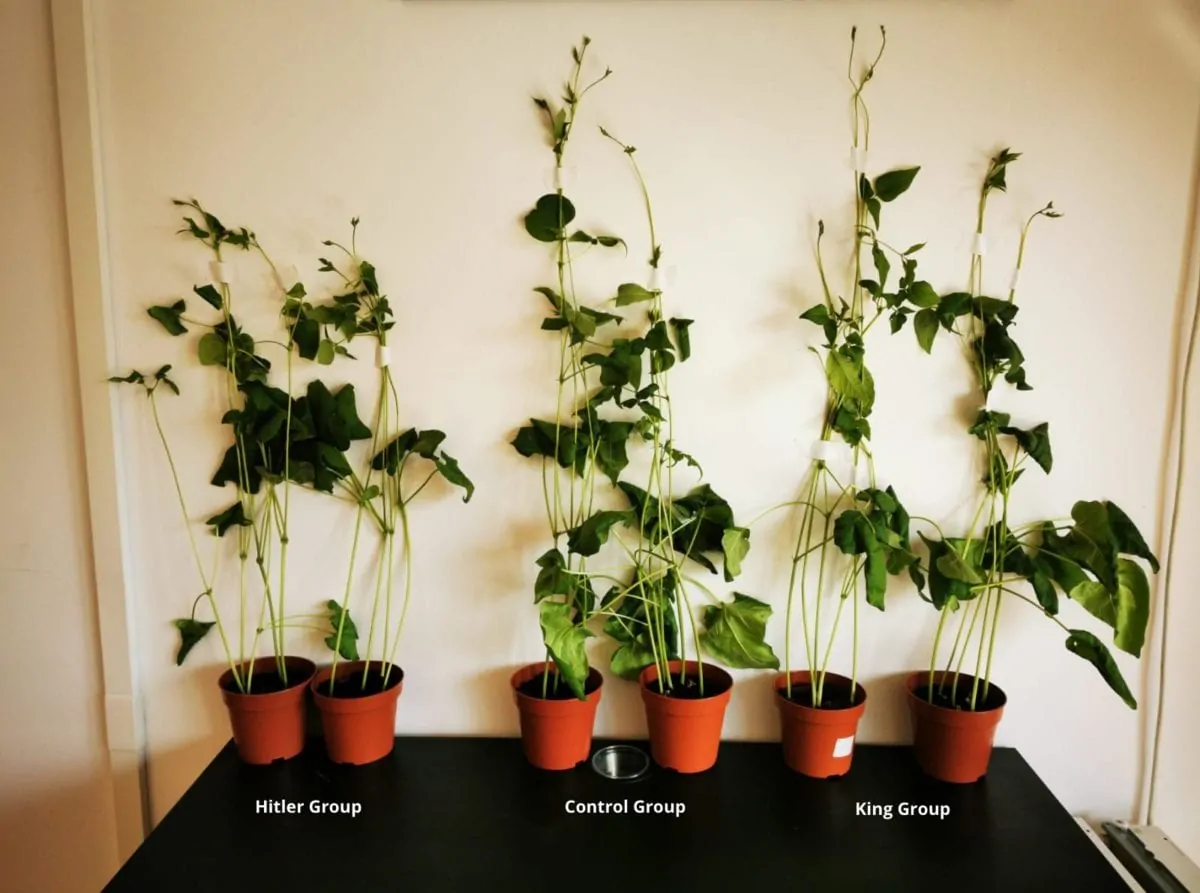
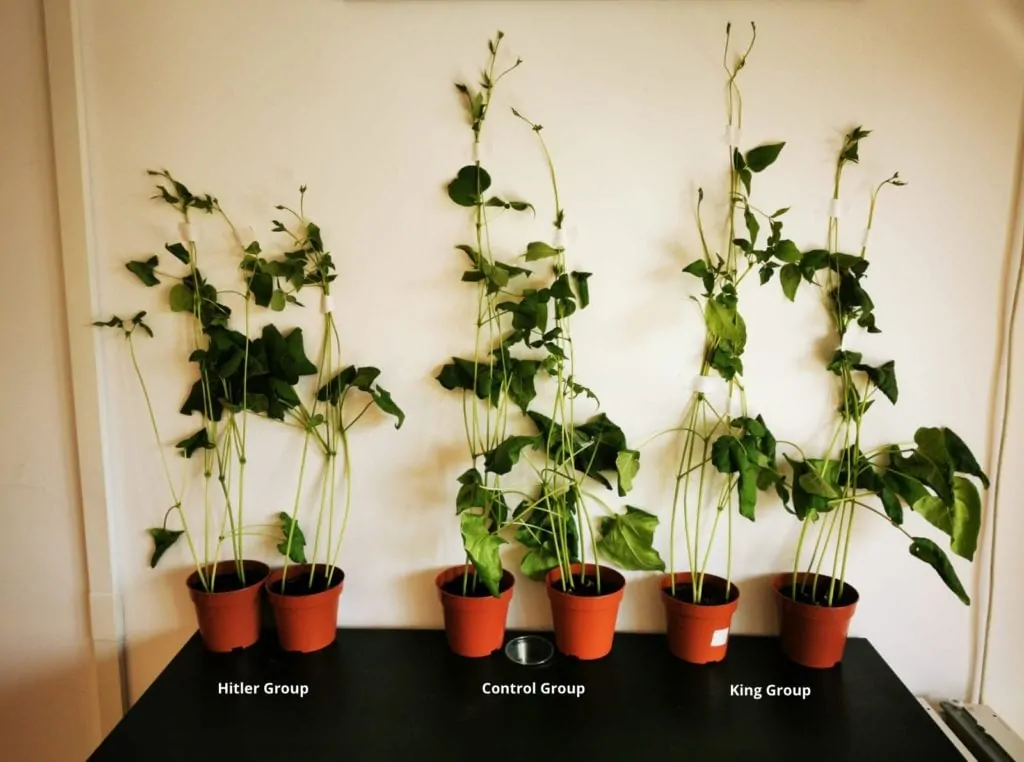



What seeds did you use
Hello Nathan, thank you for your question! We used white beans in all three groups because they sprout fast and grow quite tall in a short amount of time. Hope this was helpful!
so my comment is about the plants and if they were to bare fruit , witch one would be better and i also wanted to know if you added a hostile place for the hitler group, and a really calm and welcomeing place for the king group. and if the plants were exposed to that for years. and i want to know how that would effect humans?.
Hi Z! Thank you for your question. The experiment was interested in the effects the two speeches have on the height and overall growth of the plants. By the growth rate, probably the control group and the positive group would have a better harvest, but you can try yourself and let us know too!